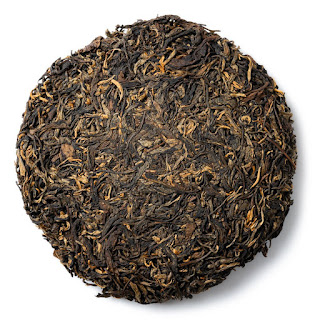Boiling tea is one of the oldest ways to prepare tea. As almost every book on tea starts with “Tea was used as medicine in ancient China for thousands of years”, there are also legends as well as researchers by historians which talk about boiling the tea leaves, both with other herbs and ingredients as well as boiling tea alone to get the healing, medicinal liquor. These methods are not forgotten but compare to other tea preparations, boiled tea is almost unknown.
Over the past couple of years, boiled tea has become more popular and to the tea lover’s ears, the idea does not sound so exotic anymore. I was amazed by the idea of boiling from the first time I heard about it, there is something archetypal in the process of boiling plants. So I naturally started to develop some teaware for such magic. In this short article, I would like to share with you my sidehandle teapots which were created for boiling tea, few tips on boiling in such pot, and how to take care of them.

A Guide to Boiling Tea
Flameproof clayFirst: Not all teapots are for boiling! I received this picture from my customer with kind of “what I did wrong” question. The pot he purchased from me a while ago was not made of flameproof clay. Actually, most of the pots are not suitable for boiling. So be careful.
BEFORE YOU START, PLEASE MAKE SURE THAT YOUR POT IS MADE OF FLAMEPROOF CLAY AND MEANT TO BE USED FOR BOILING. ASK THE MAKER OR YOUR SUPPLIER IF NOT SURE. If it is the pot from me, send me a picture and I will confirm
It took me a while to develop the clay with the proper composition. Literally a few dozens of cracked pots and tons of testing. As you can maybe see from the pictures, it is the same clay (or variations of it) which I use for making kettles. It can handle charcoal as well as gas and electric heat sources.
To give you a better idea how such pot works, here are few lines from the user manual I sending with my flameproof teapots:
------------------------------------------------------------------------------------------------
THIS TEAPOT:
....was created for boiling tea or herbs, but can also very well serve as a kettle, for heating and boiling water
......can be used over electric, gas, alcohol as well as charcoal heat sources. If used over infrared (IR) or gas, please use it together with the flame diffuser I send together with the pot. Flame diffuser protects clay from the too intense thermal shocks. You don't have to use the diffuser when heating over the charcoal or using an alcohol burner to maintain the heat
......I recommend filling it up to around 3/4 of its volume . Boiling tea creates foam and bubbles and can easily overflow if the pot is full. Low fire is usually enough for maintaining the boil.
....over stronger heat sources, the ceramic handle can get a bit of the heat as well. Be aware of it and keep the handle away from the direct fire/heat. If the handle get hot, use a tea towel to hold and pour comfortably
.....if empty but still hot from boiling, please let it cool down for couple of minutes before refilling with cold water
.....When the tea session is over, empty the teapot while it is still warm, clean well with hot water and let it dry. Before closing and storing the pot, be sure it is clean and dry.--------------------------------------------------------------------------------------------------------
I do them mostly unglazed inside. On one hand, glazing inside would make it more smooth, and easier to clean, more user friendly. But I found out the glazing create more tension in the clay and the thermal shock resistance is better if the glaze is not used. And I am choosing resistance over confort :) If you would like to keep your pot clean and without aromas stuck in the clay, I recommend to clean it after you finish your tea session right ahead, and boil inside clean water for a bit, pour it out and let it dry. It works for me very well.

If you went through the videos I shared or you are learning from GTH boiled tea course, you will receive tons of tips on how to boil and what teas are great to prepare this way. What I could recommend is not to be afraid and experiment with what you have right now. You can boil literally any tea after you brew them in your regular way. More the leaves from your teapot, shiboridashi or gaiwan you are using to any clean pot suitable for boiling, glass, or stainless will do. And you will see. Sometimes just heating up to 100°C and a short boil will release an unexpected flavor, sometimes you can boil it for 30min or more. Some teas will be terrible or hardly enjoyable. But some will show their full potential under the longer boil and open their magic for you.
























